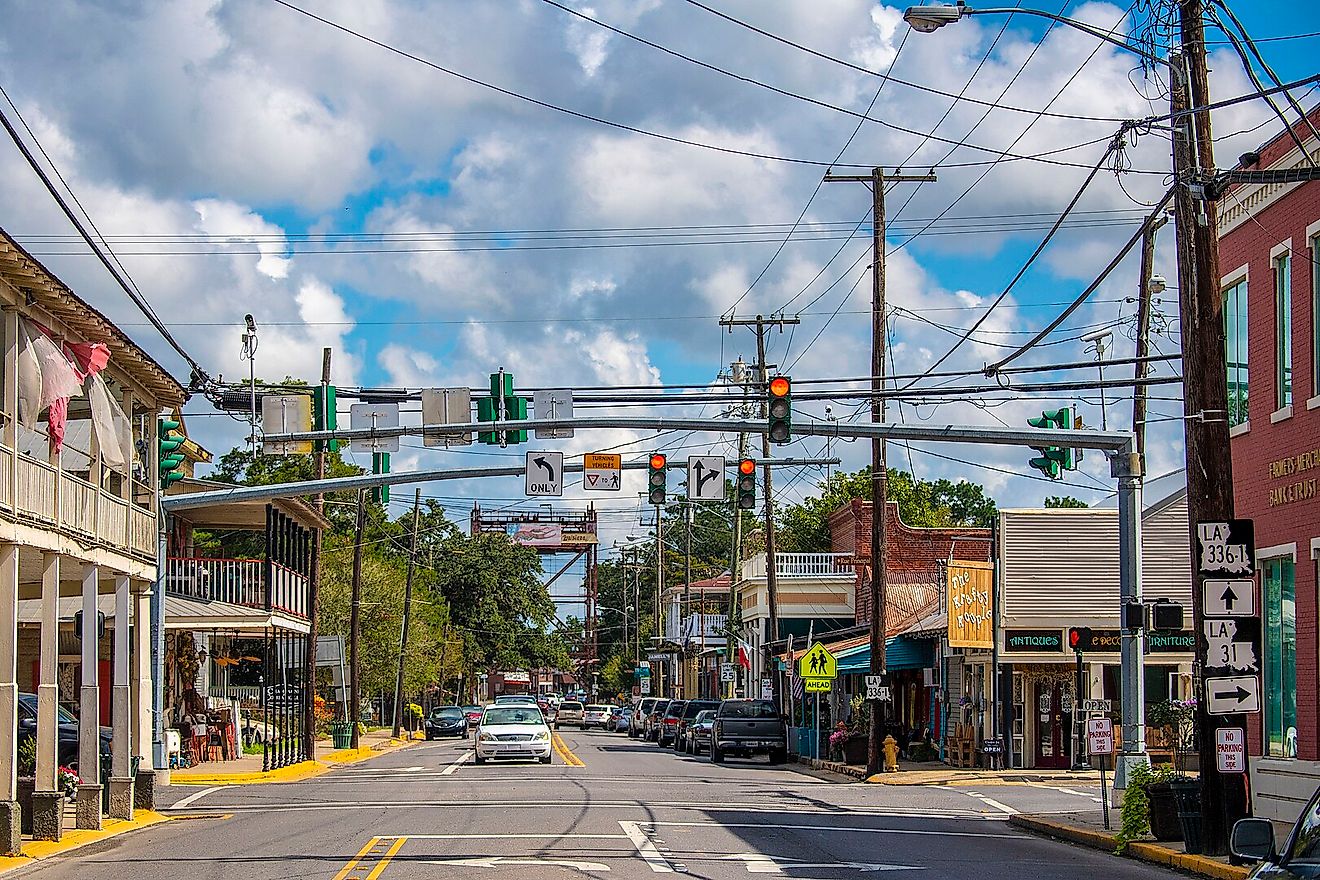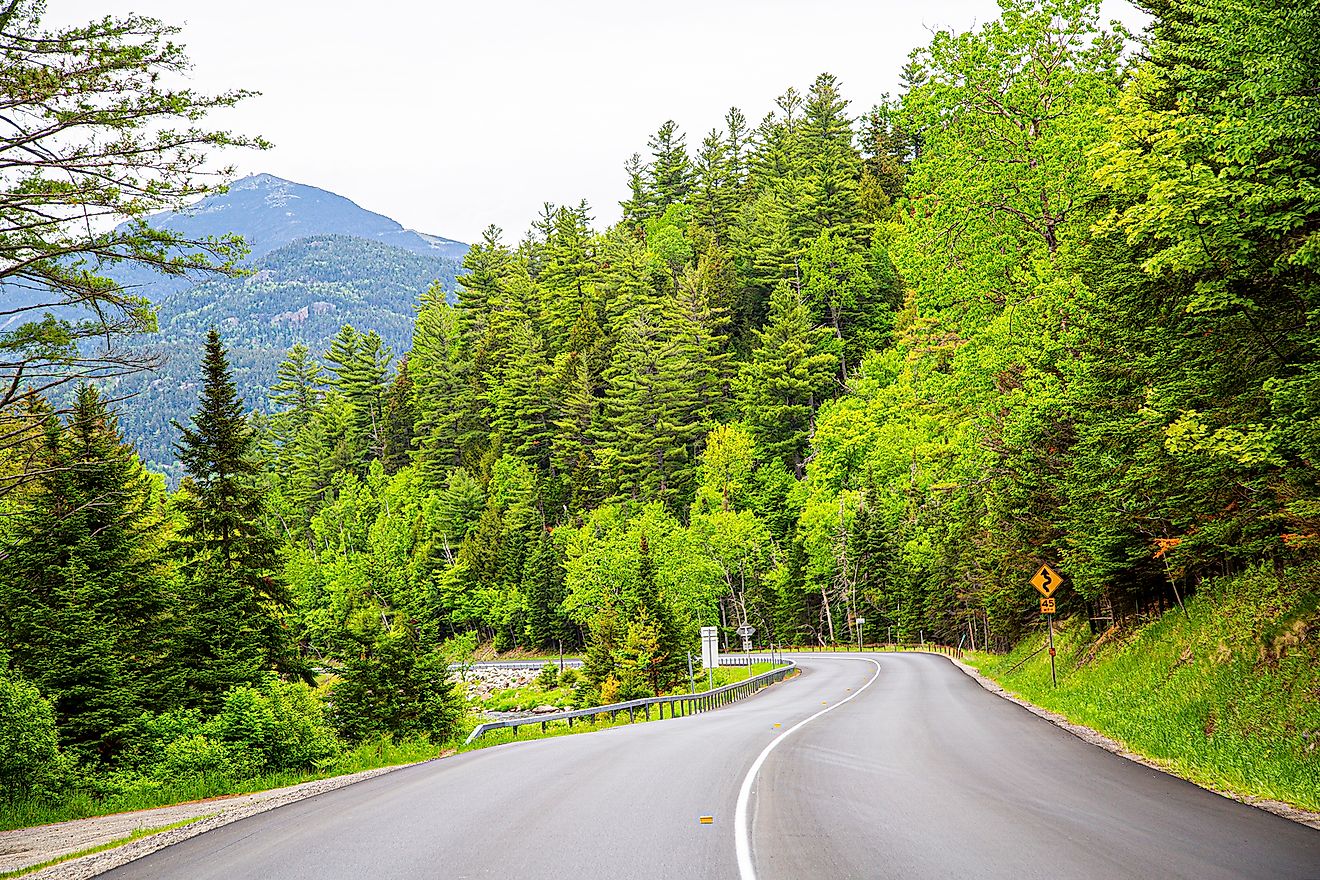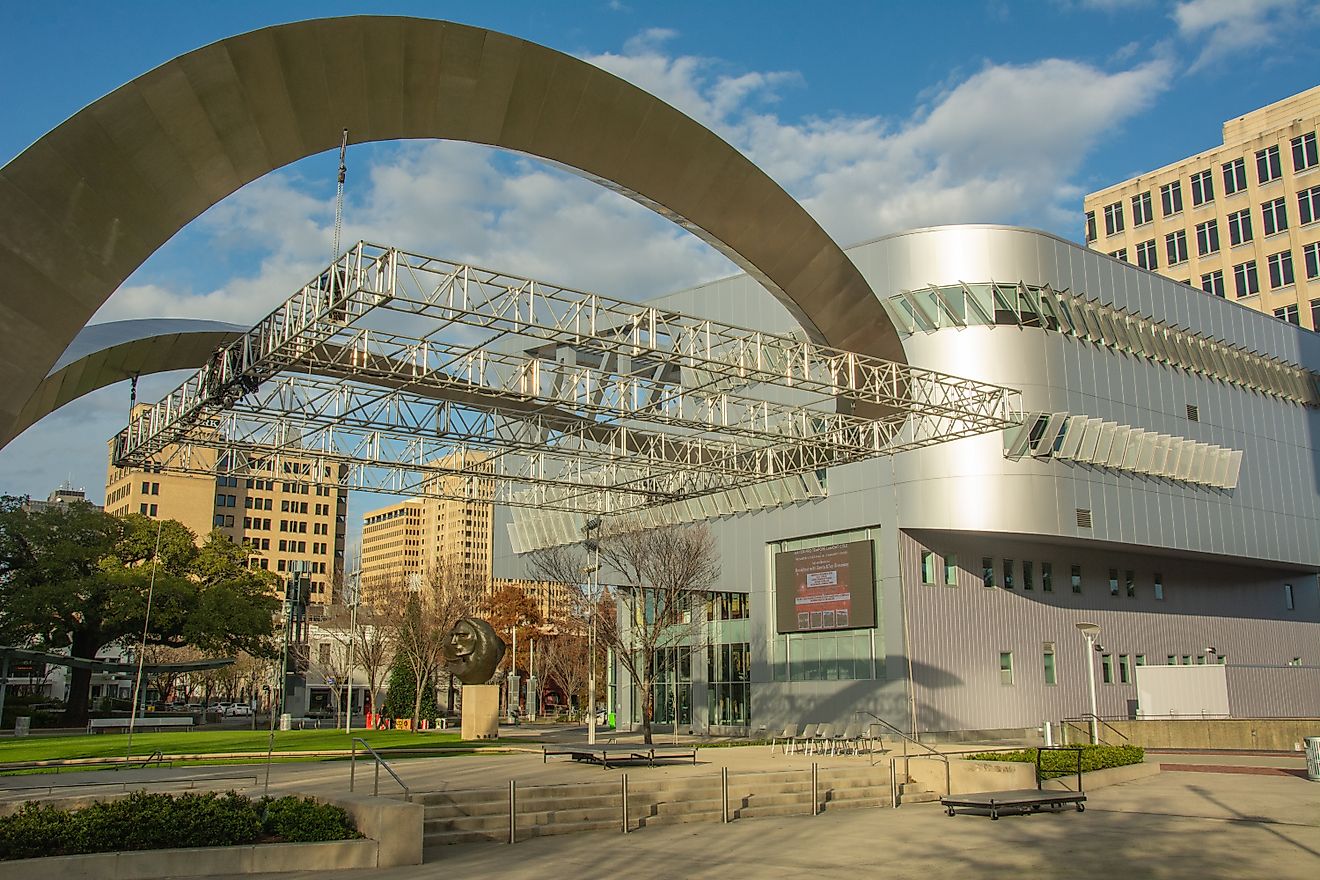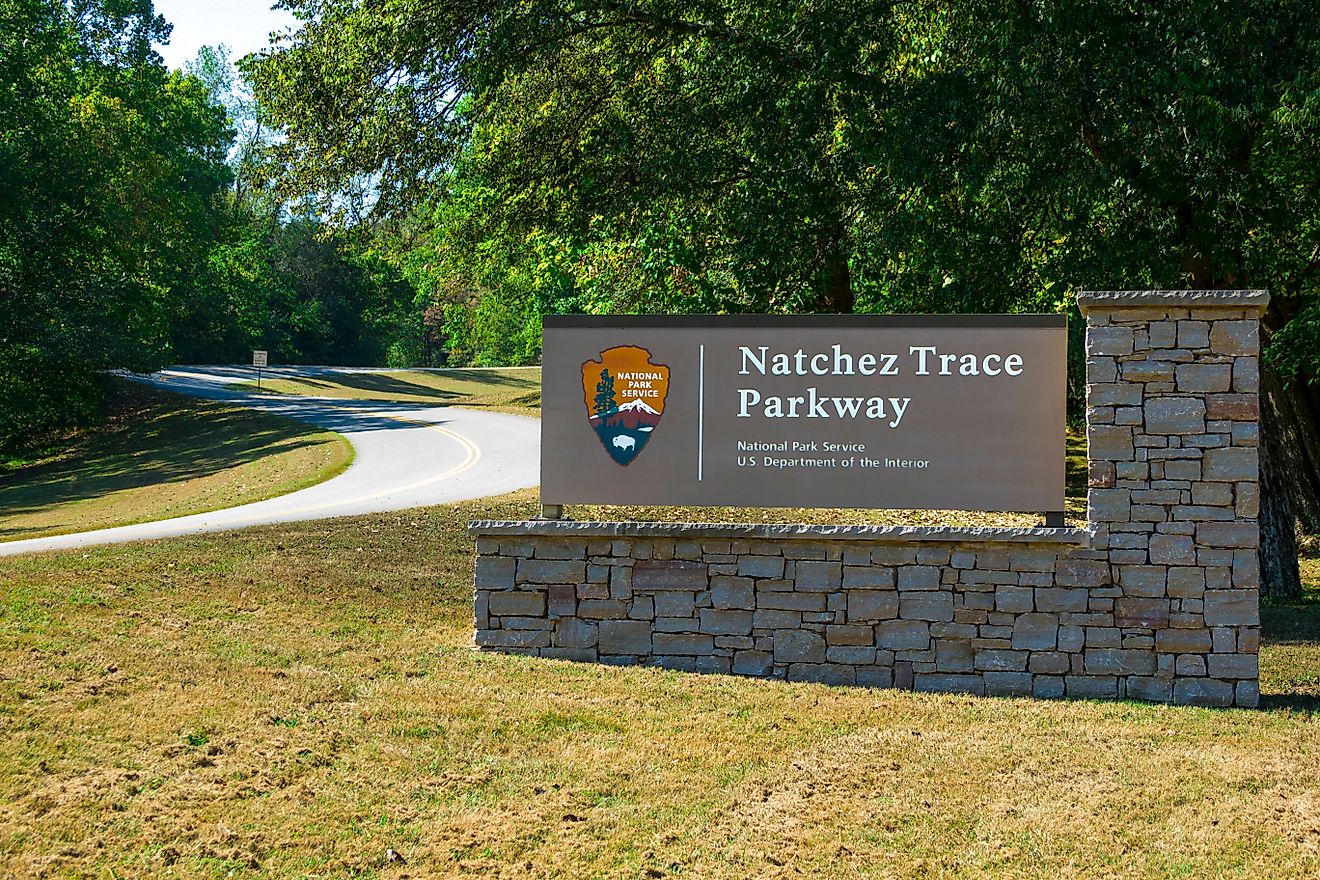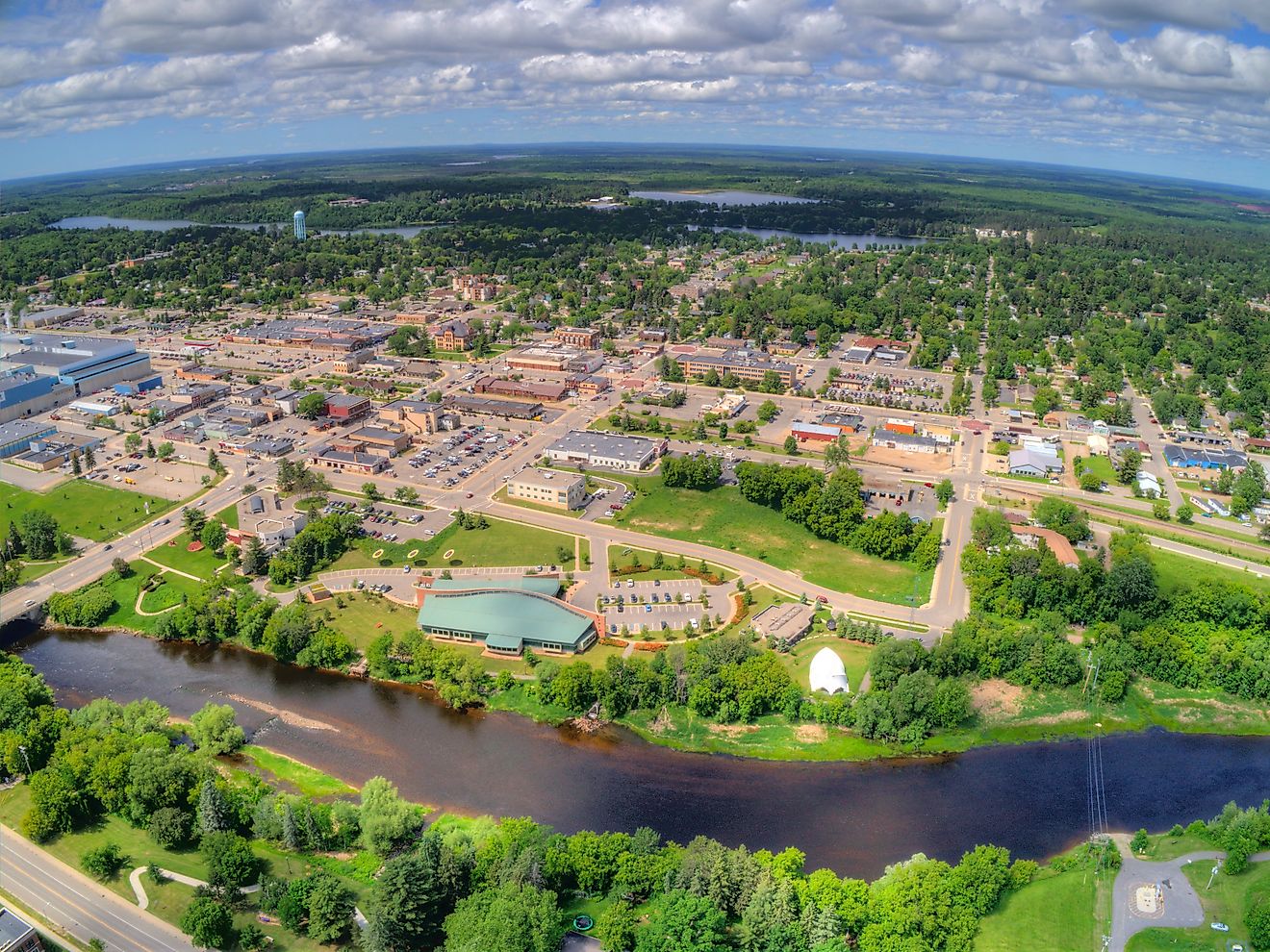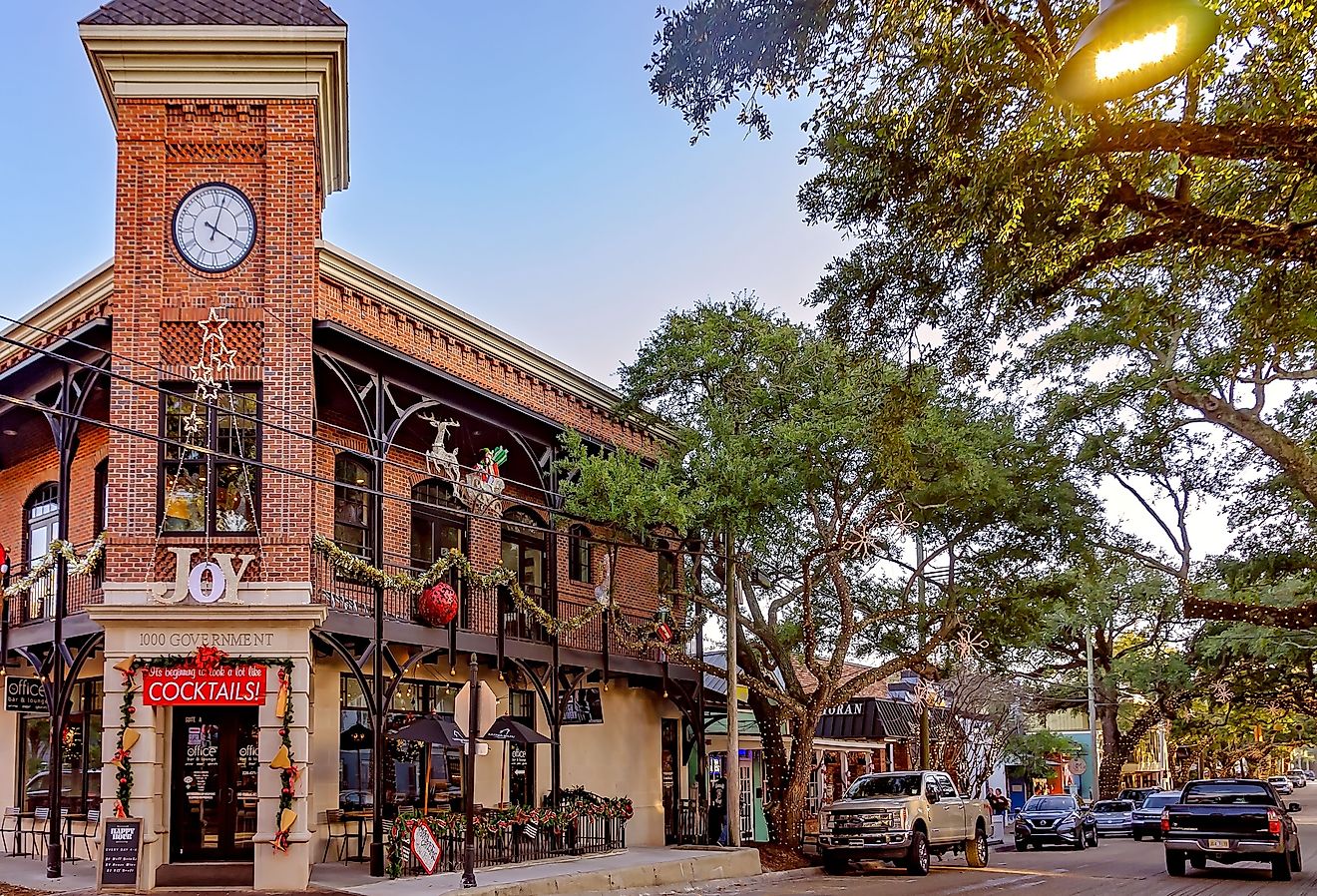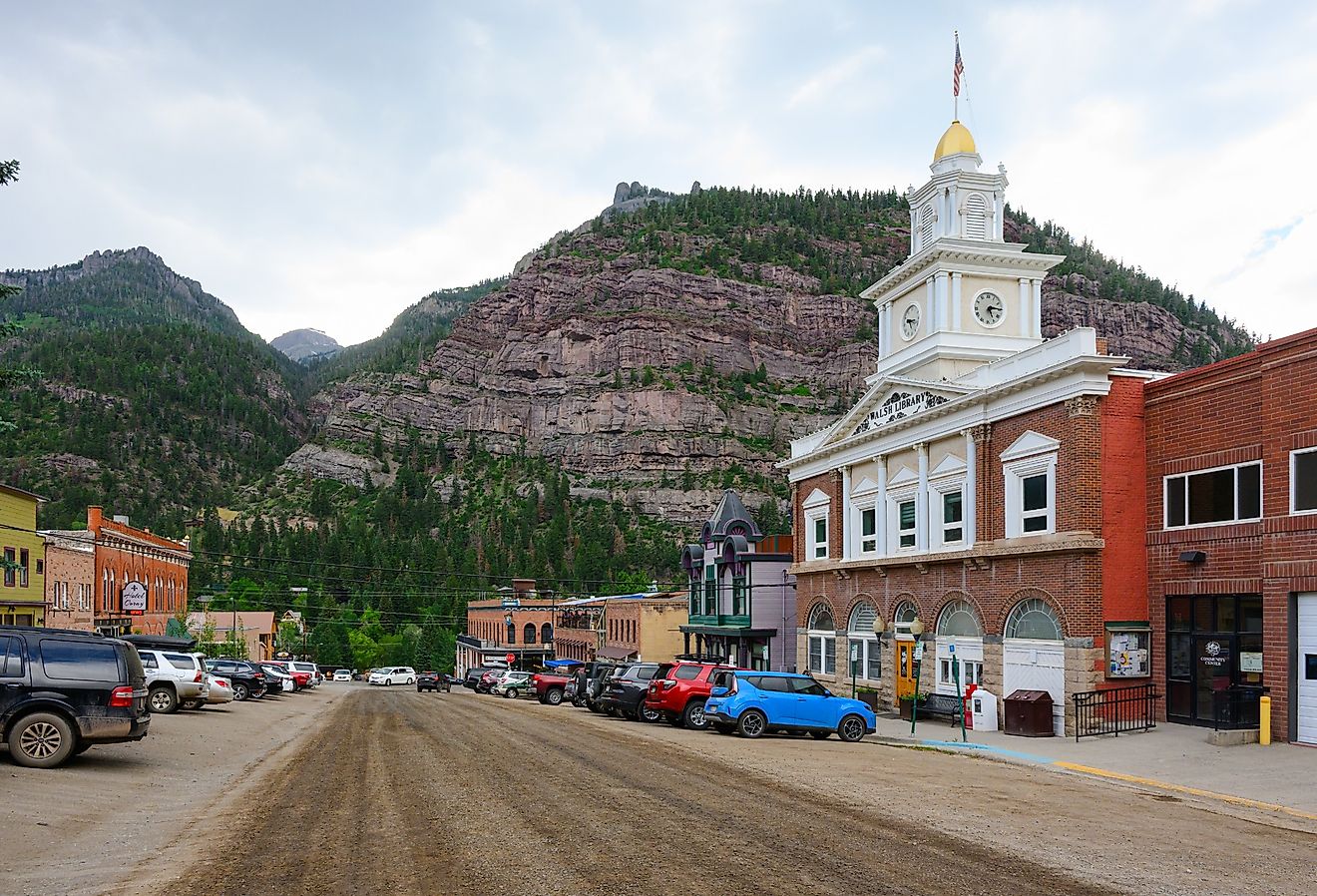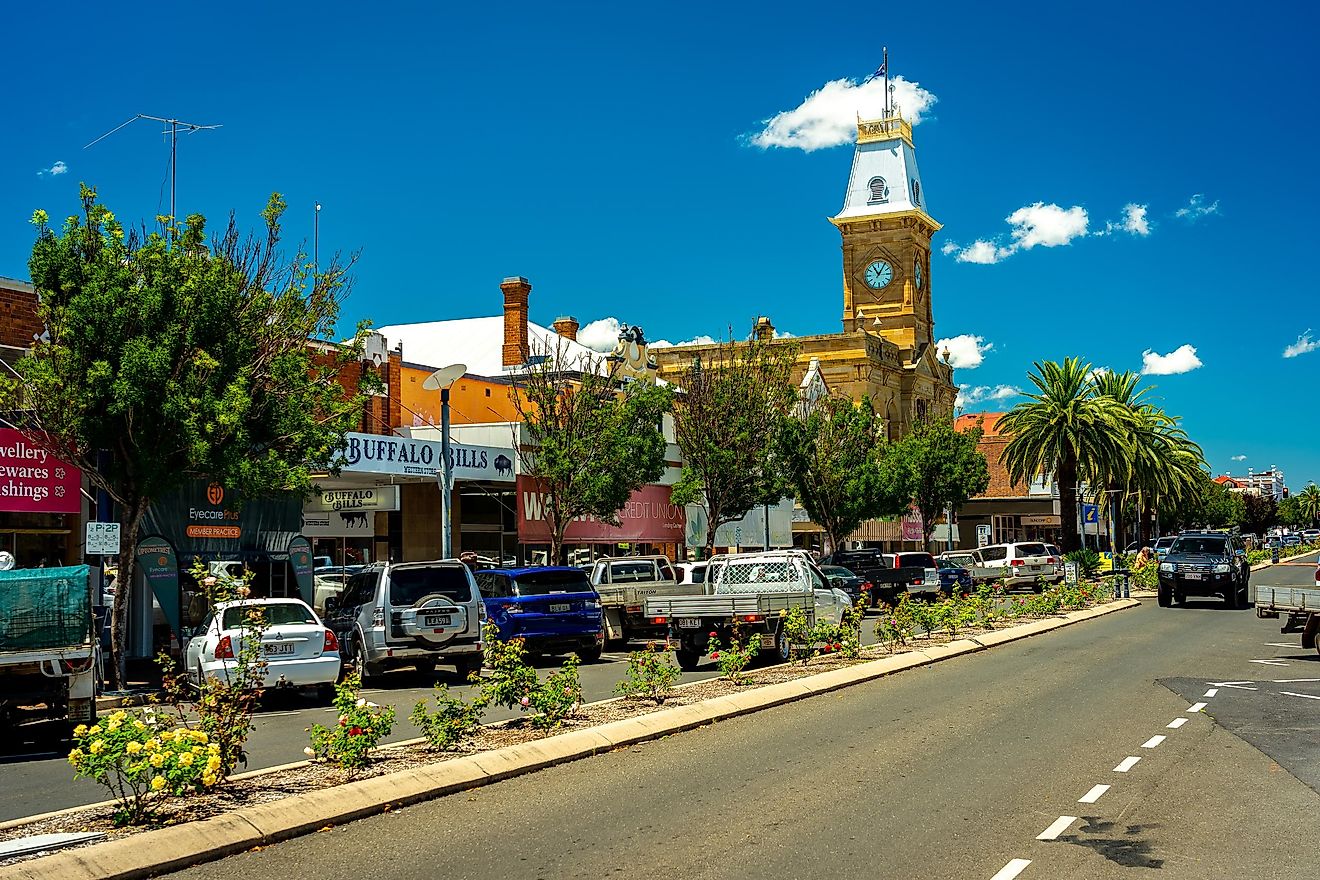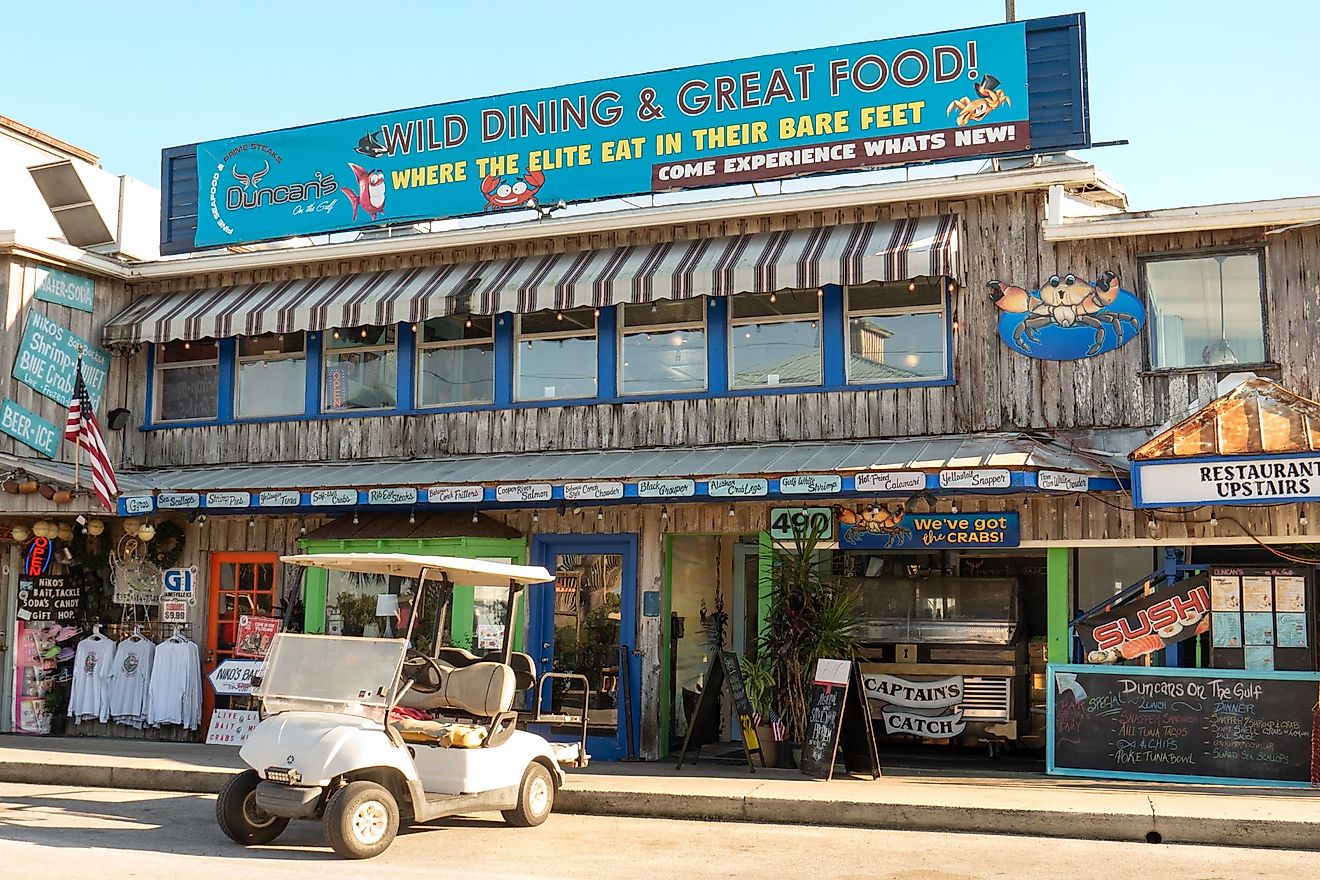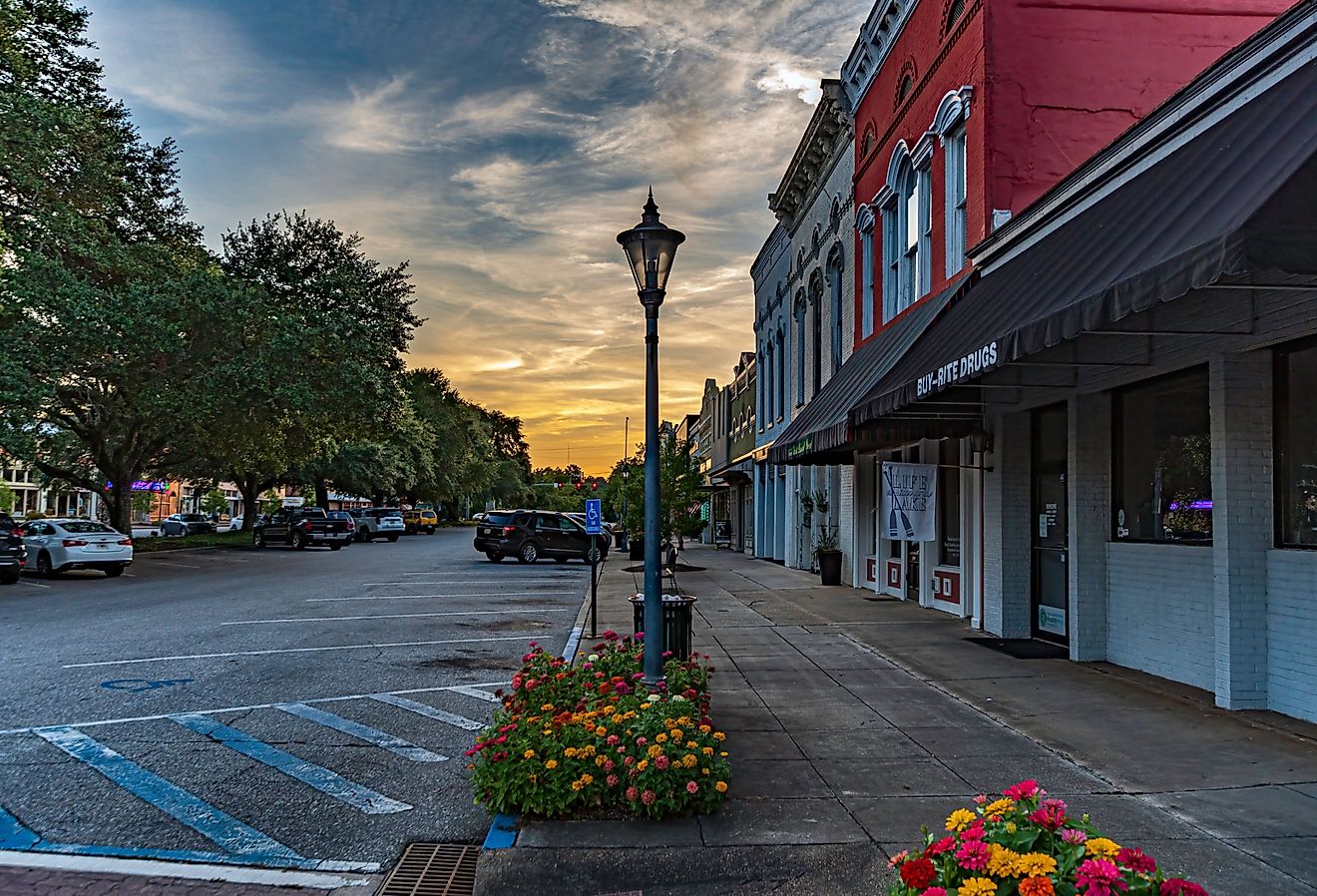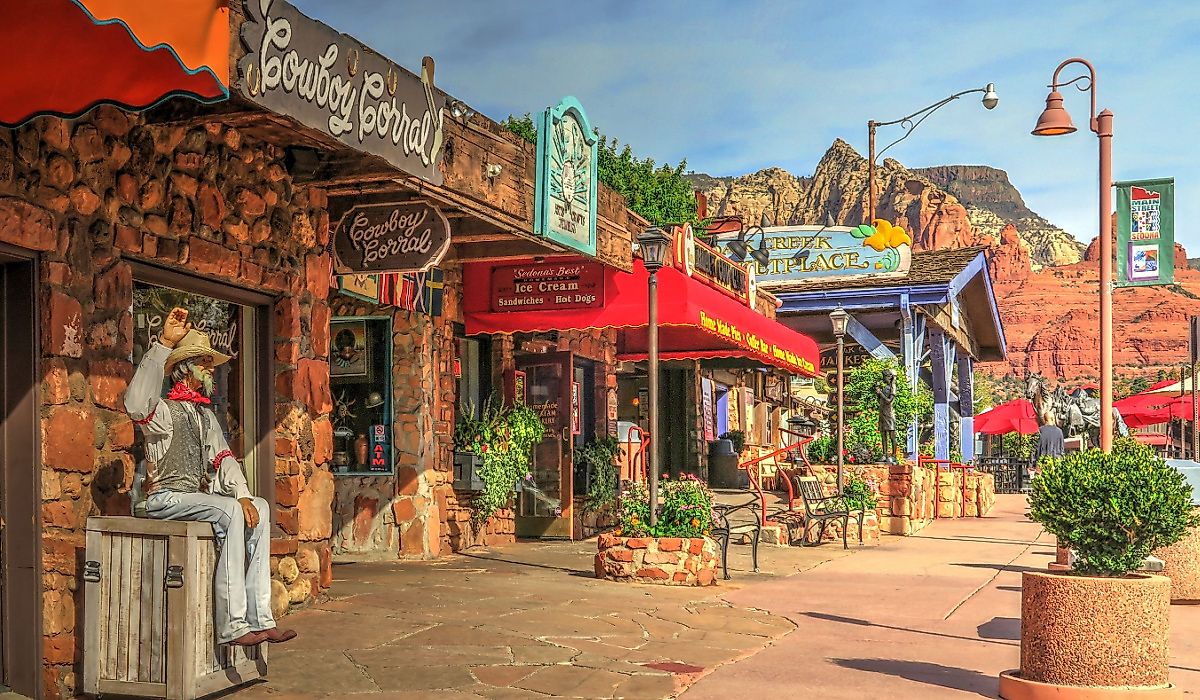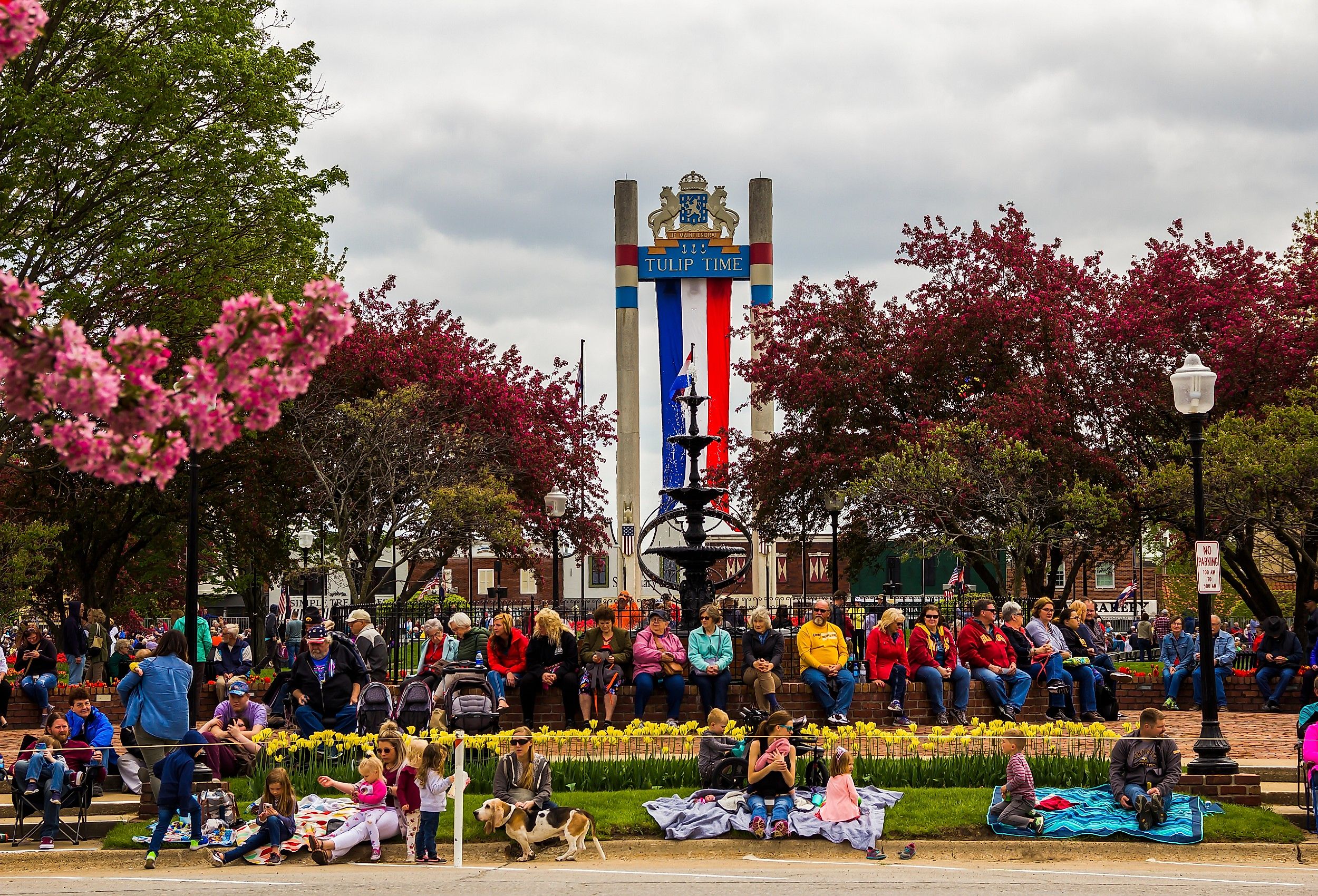
11 Top-Rated Small Towns In Iowa
"If you build it, they will come."
No truer words were spoken than in the classic American film, The Field of Dreams. In the Hawkeye State of Iowa, amidst 13 million acres of golden corn, many fascinating structures have been built to attract innumerable people across the US and even around the world. As the "Food Capital of the World" (a top producer of pork and corn), several small towns possess unique marvels of history and culture. In towns where historical figures like John Wayne and Buffalo Bill were born, or where classic movies were filmed, and where unusual attractions like the Grotto of Redemption sit, these top-rated small towns are not to be missed. Because Iowans built these towns, you should come and explore the many delights on offer.
Dyersville
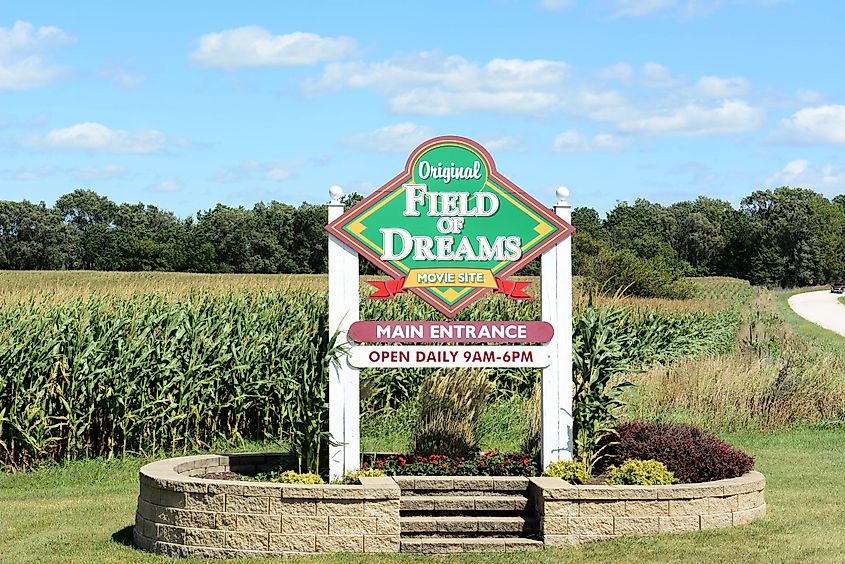
Take yourself out to the ball game in the small-town setting of The Field of Dreams. In the 1980s, screenwriter Phil Robinson saw Dyersville as the perfect, heartwarming setting for a film based on the novel Shoeless Joe. To this day, Dyersville remains a cozy, friendly town for baseball enthusiasts and fans of the classic film to visit, with a few exhibits showcasing scenic moments in the film. Only about 70 miles north of Iowa City, you can visit the house where the Kinsella family of the movie took residence or tour other scenic areas captured in the movie.
Aside from vast swaths of cornlands as far as the eye can see, Dyersville also holds the Basilica of St. Francis Xavier, a predominant Catholic edifice that is large enough to hold 1,000 people, and the National Farm Toy Museum, which showcases the Ertl Company’s famous scale-modeled farm tractors and other toys. Once the sun sets in Dyersville, find accommodations at Comfort Inn Dyersville or Colonial Inn Dyersville.
Pella
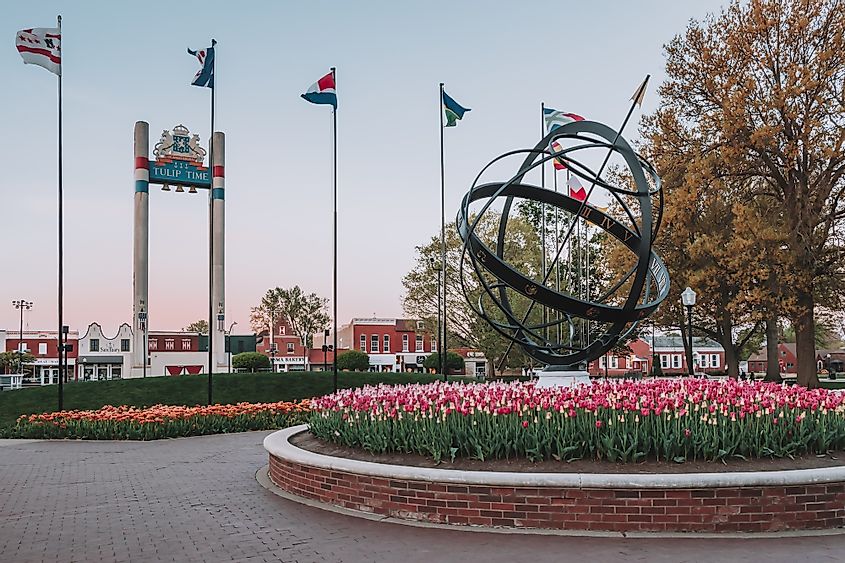
Home to Iowa’s largest lake—Lake Red Rock—the town of Pella is a Dutch-style community with a homely and natural atmosphere to admire. Only about 40 miles from Des Moines, journey through splendid natural and culturally Dutch amenities like Big Rock Park, encompassing 83 acres of native timber; Brinkhoff Park, a flamboyant display of Dutch flora surrounding an adorable windmill; and the Klokkenspel, a courtyard featuring eight, 4-foot-tall mechanical figures that portray people and moments of Pella’s turbulent immigration history.
To further celebrate its Dutch heritage, Pella promotes Tulip Time, a festival showcasing parades, Dutch costumes and dancing, and beautiful tulip gardens. The town also sponsors the Lake Red Rock Balloonfest and Klompen Classic 5K Run/Walk, and if you get tired from all the walking and running, find lodgings in the Amsterdam Hotel or Dwelling Place.
Decorah
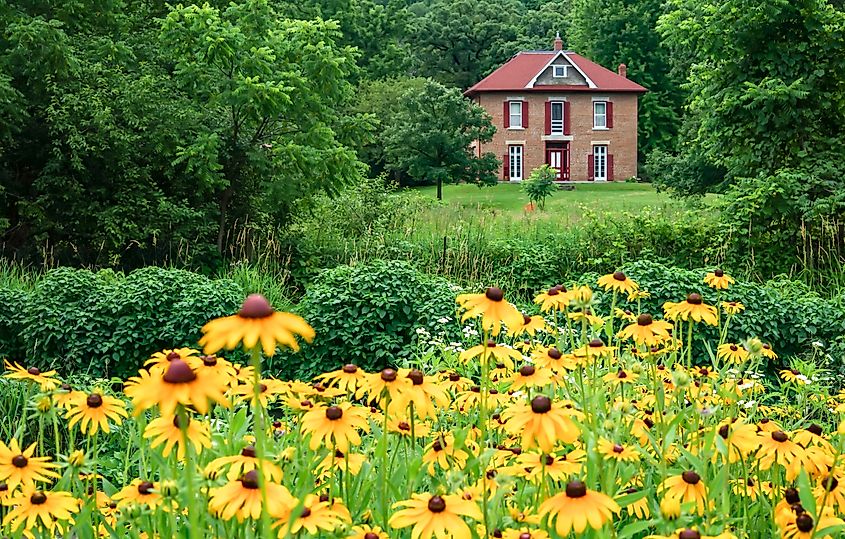
Amidst the steep, rugged landscape of the Driftless—a region never covered by glaciers during the last ice age and where large concentrations of cold-water streams are found—the scenic town of Decorah is a spot of natural beauty. Kayak along the Upper Iowa River that flows through town and run through the Trout Run Trail, an 11-mile biking and walking trail. Visit dynamic natural parks like Ice Cave, Phelps, Malanaphy Springs, Dunning’s Spring, Palisades, and Van Peenen Memorial Park.
Most of all, get to learn all about the Decorah Impact Crater in your nature travels; a 465-million-year-old, 3.5-mile-long, and 100-foot bed where fossils of Decorah’s giant sea scorpion (Pentecopterus decorahensis) were discovered. If you are not the outdoorsy type, you can always visit the Vesterheim Norwegian-American Museum, which houses an expensive collection of Norwegian-American artifacts, or tour ArtHaus, where modern art comes to life. If you get exhausted, stay in Fairfield by Marriot Inn & Suites Decorah, Hotel Winneshiek, and Country Inn & Suites by Radisson.
The Amana Colonies
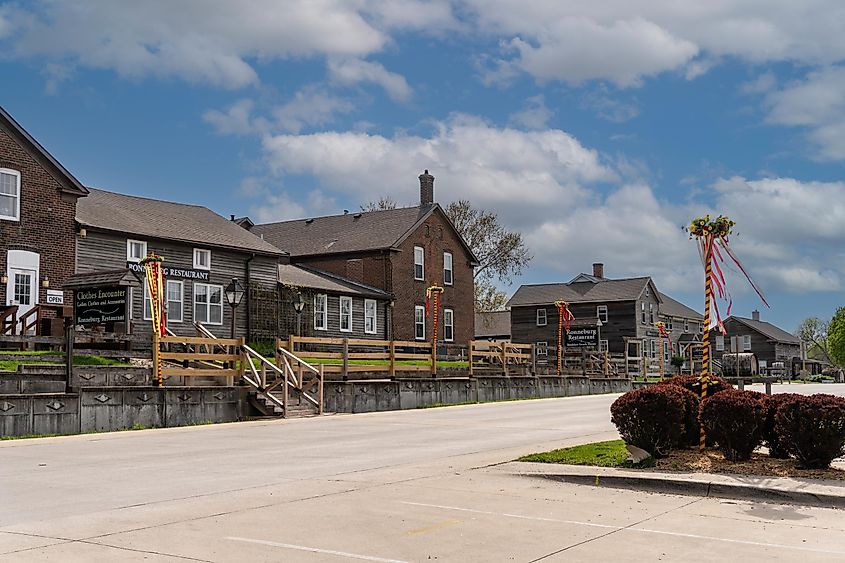
America has had a bad history when it concerns colonies. Fortunately, the Amana Colonies are one of the many utopian colonies established in the US during the 18th and 19th centuries. With a history dating back to 1714 in Pietist villages of Germany, German immigrants who called themselves the "Community of True Inspiration" or the Inspirationists settled in the Iowa prairies and chose the name "Amana" (from Song of Solomon 4:8, meaning "remain true") for their seven villages. You can learn about the Aman Colonies’ close German heritage and culture in the Amana Heritage Society.
The German-style villages—Amana, East Amana, West Amana, South Amana, High Amana, Middle Amana, and Homestead—are about 30 minutes from two of Iowa’s major cities, Cedar Rapids and Iowa City. From the Homestead Church to the Mini-Americana Barn Museum, which contains a collection of miniature replicas built by woodworker Henry Moore, these communities are plentiful with activities. Try not to miss out on their rich and diverse festivals, such as Winterfest, Maifest, Wurst Festival, Oktoberfest, and Tannenbaum Forest. When the festivities make you weary, recharge at the Hotel Millwright, Crest Country Inn, or Zuber’s Homestead Hotel.
Bentonsport
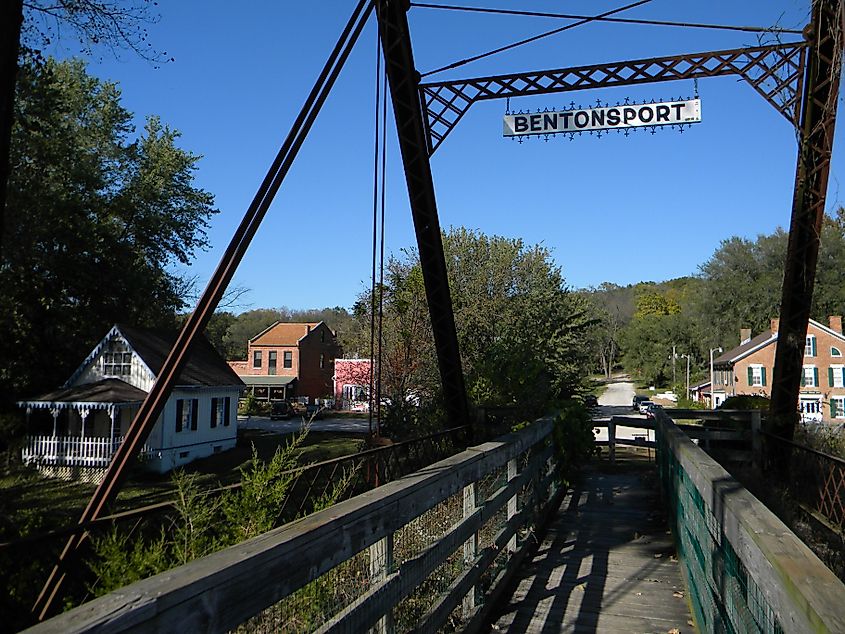
Bentonsport, one of eleven villages in Van Buren County along the Des Moines River, has barely changed from when it was a steamboat port in the mid-1800s. In the unique town deemed a National Historic District, one can almost relive the rustic and industrialized era in the ruins of old mills along the river, tucked in that little valley surrounded by tree-bristled hills. Visitors can spot the Bentonsport Presbyterian Church, one of the oldest edifices in the village since its construction in 1855, whose bell was once on a steamboat.
Stroll along the Des Moines River and imagine steamboats chugging and fuming to life, or go through the Bentonsport Historic Bridge, a one-lane iron bridge over the river that connects Bentonsport to its neighbor, Vernon. Consider attending the Van Buren Scenic Drive Festival in October for local crafts, antiques, and lively recreational activities. Finally, find relaxation in Mason House Inn Bed & Breakfast and Alexander's Cottage.
McGregor
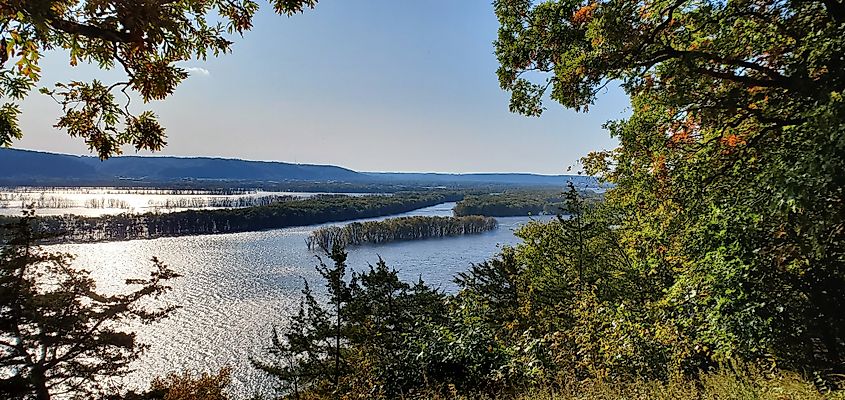
Bordering the Mississippi River to the east and surrounded by steep bluffs, the town of McGregor was given the nickname "The Pocket City" for being so tucked away in nature. Still, the town is not so isolationist: it is a resting point for State Highway 76, part of The Great River Road, a national byway that travels 326 miles through Iowa. In addition, McGregor is an endpoint of the 109-mile River Bluffs Scenic Byway that winds through Clayton and Fayette counties.
Because the town rests in the Driftless Area and is near Pikes Peak State Park, Effigy Mounds National Monument, and the Mississippi River, there are many natural treks and travels to enjoy. Aside from the scenic views, the town also offers the McGregor Historical Museum, where you can learn how McGregor grew from a small ferry boat landing to a major shipping depot. You can also view historical art exhibits, featuring Andrew Clemens’ sand bottles, Emma Big Bear’s baskets, and Margery Goergen’s hand-colored photographs. Do not forget to book rooms in the American House, Backwoods Hotel, or Little Switzerland.
Elk Horn

Known as an enclave of Danish ethnicity, Elk Horn is a peaceful and relaxing locale along Elk Horn Creek. The town derives its name not from the titular creek but from the fact that so many elk shed their horns on the timber in the area. Visitors can learn more about Elk Horn’s historical ties to Denmark and Danish immigration in the Museum of Danish America.
Other architectural delights include the iconic 60-foot-tall Danish windmill that represents the town’s spirit; the Nordic-themed VikingHjem, which provides a glimpse into 900 CE life of a Danish Viking; and the Ebeltoft Village, a recreational replica of the actual village of Ebeltoft in Denmark. Nothing is rotten in this little place, much like Denmark, especially when attending the Tivoli Fest and Julefest for Danish fun and festivities. So explore this wondrous replica of Denmark, which is about 80 miles away from Des Moines.
Orange City
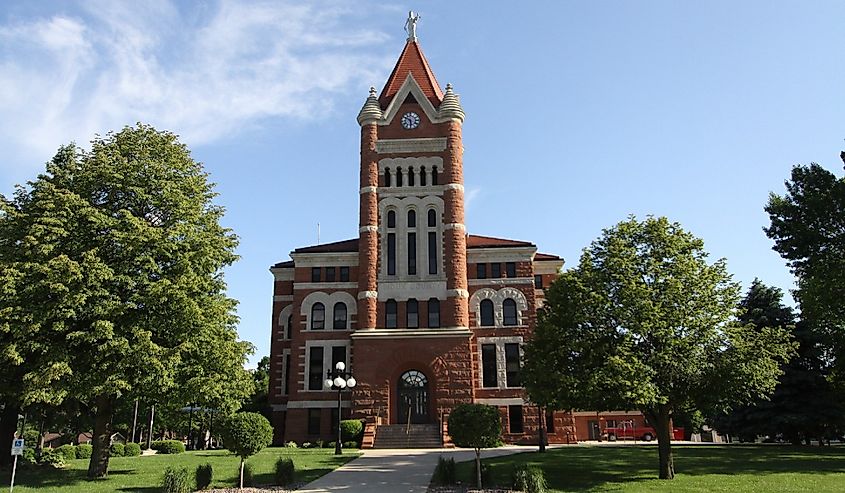
With a name like Orange City, you might think everything in the town is orange. And you would be, correct. From the Dutch windmills to the tulips, much of the color in Orange City is orange. That is not to say that the town was named after a coincidental color. Rather, when travelers from the similarly Dutch-styled town of Pella settled in land in Sioux County, they named the town in honor of the Royal House of Orange due to the travelers’ patronage of the Dutch royal family. You can discover more about the town’s Dutch legacy in the Dutch American Heritage Museum.
More than two hours from Omaha and nearly four hours from Des Moines, Orange City cherishes its Dutch identity alongside Pella by maintaining the orange-colored Vogel Windmill and celebrating the Tulip Festival, one of the oldest festivals in the region since 1933 that showcases Dutch folk dancing, a musical night show, and the Tulip Queen and Court. If you have seen too many oranges in the town, treat yourself to a simplistic rest in the Dutch Inn & Suites or Hampton Inn.
West Bend
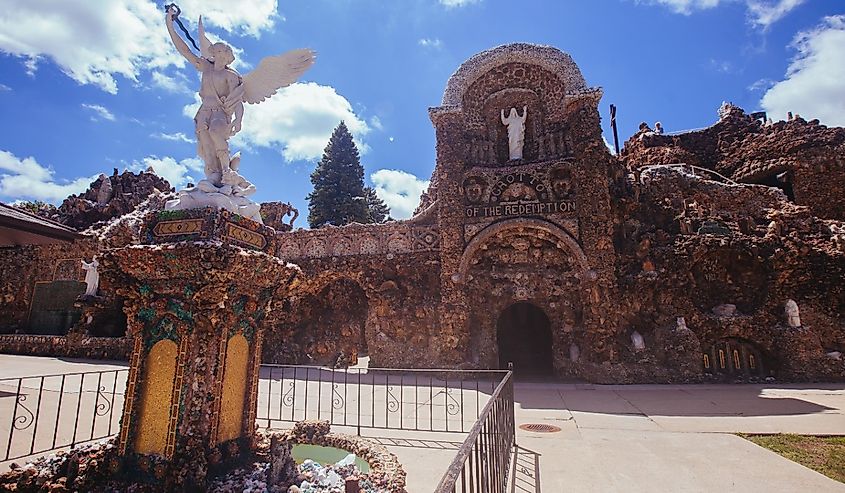
West Bend seems like a simple town located northwest of Fort Dodge. Like any other town, it has its historic sites like an old school house and post office that provide windows into the past, a replica of a prairie Sod House used as a temporary dwelling for pioneers, and even the West Bend Historical Museum, where you can learn all about the town’s history.
But what truly establishes West Bend as one of the top-rated towns is the Grotto of the Redemption, considered the "Eighth Wonder of the World" and "a miracle in stone." Under the inspired guidance of Father Paul Matthias Dobberstein in 1912, architects and artists constructed the Grotto out of a plethora of precious and semi-precious rocks, minerals, fossils, and petrifactions. Each of the nine grottos contains a scene in the life of Christ hand-carved from Italian Carrara Marble. Covering a city block, the Grotto of the Redemption represents peaceful meditation and contemplative thinking for believers of Christ. If you need spiritual respite, attain tranquility in Park View Inn & Suites or Grotto Campground.
Le Claire
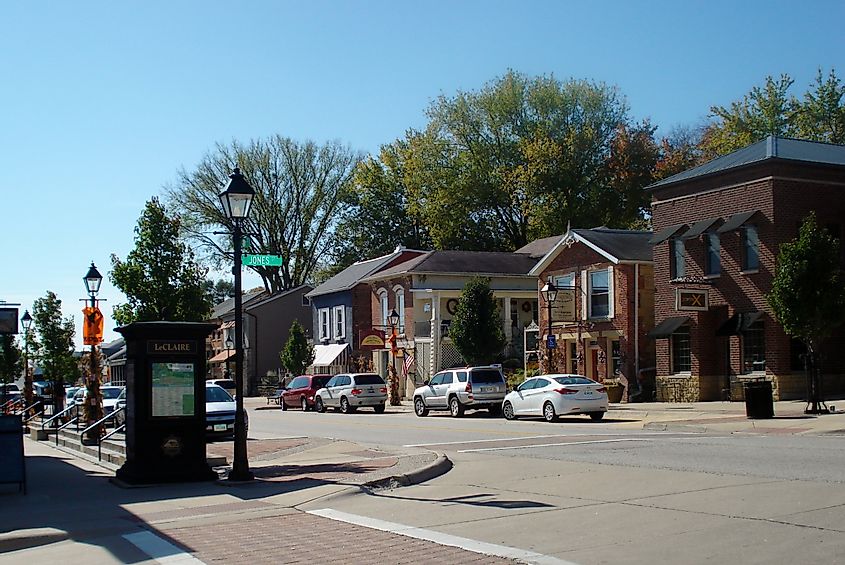
Le Claire is a town of crossroads. It lies along Iowa’s Great River Road in the Quad Cities, right beside the Mississippi River, and just a stone’s throw away from the state of Illinois. But aside from geography, Le Claire is a crossroad for history since it was here that the famed American soldier Buffalo Bill Cody was born, whose adventures and exploits can be perused in the Buffalo Bill Museum.
Furthermore, many river pilots considered Le Claire’s enthusiastic and lively atmosphere a home in the mid-1800s, especially James "Crash" Ryan, a graduate of Le Claire High School who created the seat belt and the modern-day "black box" used by aircraft. But if you want to see living American icons, then attend the inaugural Le Claire Eagle Festival, when the skies thrive with the flight of majestic birds of prey like the bald American eagle. Do not worry about lodgings because the Comfort Inn & Suites Riverview and Holiday Inn Express have rooms that are right for you.
Winterset

Set your sights on the town of Winterset, where the famous actor John Wayne was born. The town celebrates the renowned American icon through the award-winning John Wayne Birthplace & Museum, the only museum in the world that showcases the actor’s life and contributions. Learn more about Winterset’s history at the Madison County Historical Complex or the Iowa Quilt Museum. Visit the six famous covered bridges of Winterset that inspired one of the greatest love stories there is, The Bridges of Madison County. Then, spend the night at Cobblestone Inn & Suites, Covered Bridge Inn, and The Judge Lewis House.
Iowa blesses travelers with its rich bounties of corn and pork, its Dutch, Danish, German heritages, and Hollywood-worthy landscapes. Go on and travel through top-rated towns where architectural marvels like the Grotto of the Redemption stand or where famous individuals like John Wayne and Buffalo Bill were born. In dreamy fields bright with sunny corn more valuable than gold, there are many places that will linger in your hearts as you explore the Hawkeye State’s homesteads.
